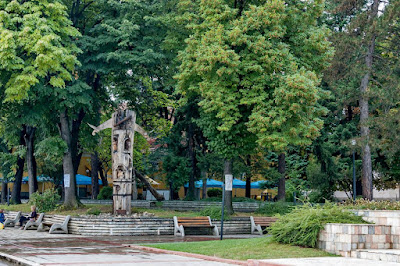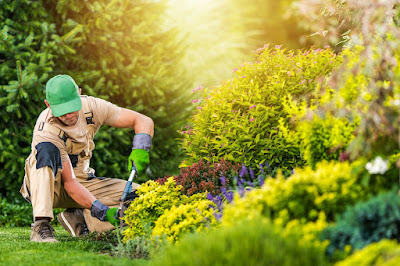Preserving Nature in the City: The Role of Trees in Rochester's Public Life
Trees stand as silent witnesses to Rochester's growth over the decades. They line streets, fill parks, and bring life to concrete spaces. These green giants do more than look nice—they shape daily life for city residents in ways both seen and unseen.
The Living History of Rochester's Trees
Rochester's trees tell a story that spans generations. Many older neighborhoods showcase mature oaks, maples, and elms planted by earlier residents. These trees form living corridors that connect the city's past to its present.
Highland Park exemplifies this living history with its famous lilac collection and diverse tree species. The park's trees reflect planning decisions made more than a century ago. Each season reveals their lasting impact on the city landscape.
Frederick Law Olmsted, the famous landscape architect who designed Central Park in New York City, also left his mark on Rochester's public spaces. His vision for urban forests still guides how trees integrate with city planning today.
Health Benefits Beyond Beauty
Trees offer more than pleasant views. Research shows they actively improve public health in urban areas.
A single mature tree can produce enough oxygen for two people daily. This oxygen production helps offset air pollution from traffic and industry. Trees also filter harmful particles from the air, catching them on leaves and bark.
Studies link tree-filled neighborhoods to lower rates of:
Asthma
Heart disease
Stress-related conditions
Mental health benefits appear just as significant. Hospital patients with window views of trees recover faster than those facing brick walls. City residents with tree-lined streets report less mental fatigue and better focus.
Rochester's medical community recognizes these benefits. Local health initiatives now include tree planting as part of broader public health strategies.
Economic Value of Urban Trees
Trees pay their way in city budgets. While planting and maintenance cost money, the return on investment proves substantial.
Property values rise 5-15% on tree-lined streets compared to similar treeless areas. Businesses benefit too—shoppers spend more time and money in retail districts with mature trees. They report more positive shopping experiences and stay longer.
Energy savings add up quickly. Strategic tree placement around buildings cuts cooling costs by 20-30% during summer months. This natural air conditioning works through shade and the cooling effect of water vapor from leaves.
The proper care and maintenance of trees prevents costly damage to infrastructure. When trees suffer from disease or improper pruning, they become hazards.
Trees as Community Builders
Trees create gathering spaces that strengthen community bonds. Washington Grove in Cobbs Hill Park demonstrates this function perfectly. Its paths wind through stands of old-growth trees, drawing diverse visitors who share the experience.
Neighborhood tree planting events bring residents together around a common goal. These activities build connections between people who might otherwise remain strangers. The shared care for young trees establishes ongoing relationships.
Community gardens and food forests take this concept further. Projects like Rochester's food forest initiatives use trees as the backbone for growing spaces that produce fruit, nuts, and herbs while creating social hubs.
Climate Resilience Through Urban Forestry
Rochester faces climate challenges like any modern city. Trees stand at the forefront of adaptation strategies.
The urban heat island effect raises city temperatures significantly above surrounding rural areas. This temperature difference stresses infrastructure and increases energy demands. Trees mitigate this effect through shade and transpiration—the natural process of water moving through trees and evaporating from leaves.
During heavy rainfall, trees help manage stormwater. Their root systems increase soil absorption capacity, reducing runoff and flooding risks. This natural infrastructure costs less than expanding storm sewer systems.
Carbon sequestration represents another climate benefit. Growing trees capture carbon dioxide from the atmosphere, storing it in wood and soil. Rochester's urban forest locks away thousands of tons of carbon annually.
Challenges to Urban Tree Health
Despite their benefits, city trees face numerous threats. Understanding these challenges helps protect the urban forest.
Road salt damages trees along streets and sidewalks. The salt enters soil and disrupts nutrient uptake, slowly weakening trees. Alternative de-icing methods and protective barriers help reduce this stress.
Limited root space constrains growth in paved areas. Modern planting techniques include specialized soil chambers that extend beneath pavement, giving roots room to spread while supporting sidewalks.
Disease spreads quickly among city trees, especially when too many of the same species grow close together. Rochester learned this lesson during the Dutch elm disease outbreak that devastated elm populations. Today's planting plans emphasize species diversity.
Taking Action for Rochester's Trees
Individual actions make a difference for urban trees. Simple steps include:
Watering young street trees during dry periods
Mulching correctly around tree bases (keeping mulch away from trunks)
Reporting signs of tree distress to city forestry departments
Planting native tree species on private property
Local organizations coordinate larger efforts. The Rochester Urban Forest Initiative connects volunteers with planting projects throughout the city. Their work focuses on neighborhoods with low tree coverage, addressing inequities in the distribution of tree benefits.
School programs teach children about trees through hands-on activities. These educational efforts build the next generation of urban
Looking Forward: Trees in Rochester's Future
As Rochester evolves, its relationship with trees will shape city life. Climate projections suggest different tree species may thrive in future conditions. Planning now helps ensure a green canopy for generations to come.
New developments include trees from the earliest planning stages rather than adding them as afterthoughts. This approach treats trees as essential infrastructure rather than decorative elements.


